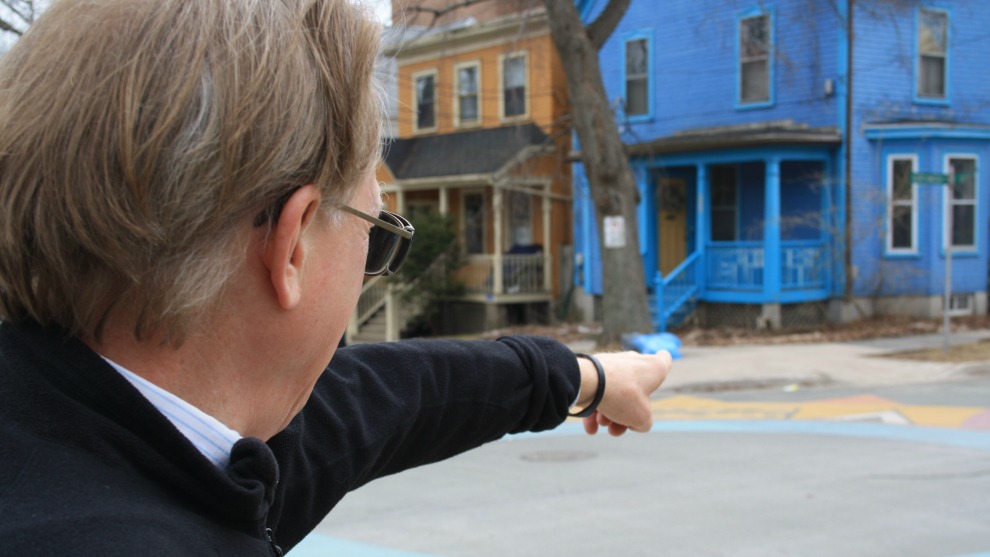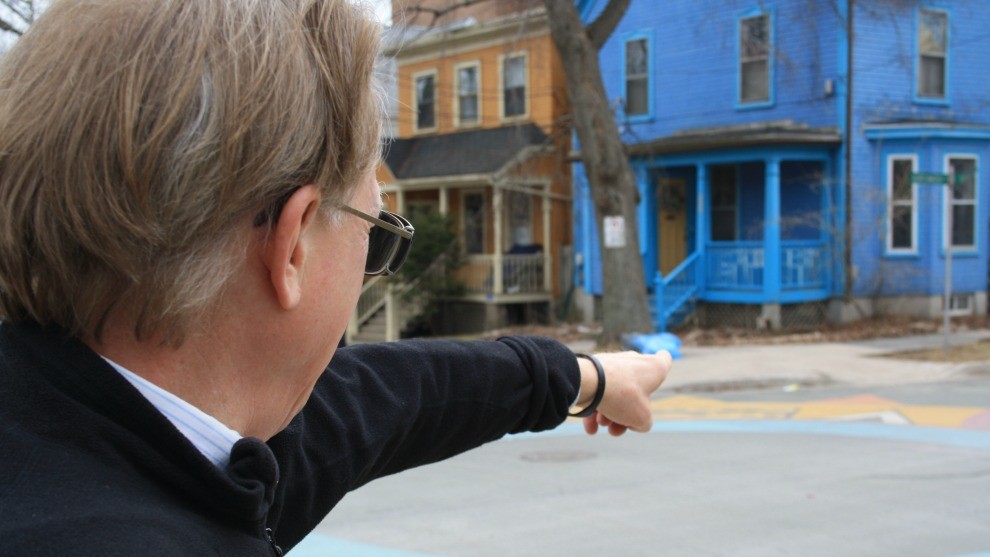COMMUNITY
Halifax street paintings strengthen community bonds
At least 3 more paintings currently in the planning stage

caption
Paul Hannon shows off the street painting at the intersection of Black Street and Northwood Terrace.
caption
Paul Hannon shows off the street painting at the intersection of Black Street and Northwood Terrace.Walking down the street, putting one foot in the next, it’s easy to grow used to the rush of grey asphalt.
But on some streets in Halifax, the monotony of your commute might just be interrupted by something a bit more colourful.
Street paintings have been popping up over the city in the past few years, and more will soon be underway.
There are currently plans for paintings at the intersection of Dublin and Summit streets, somewhere in downtown Dartmouth — exact location to be decided —and the Adventure Earth Centre just off the Dingle park.
Kate MacLennan says that street paintings are more than just decoration. She’s a community developer with the city and oversees all of the street paintings that go up. While the city provides some funding and direction, it’s up to the residents to come together and do the work.
“We hear a lot of stories about people who have been living in a place for a long time and didn’t know their neighbours’ names. So something as simple as knowing people’s names when you walk down the street, it really contributes to a sense of belonging,” she says.
The process
Interested groups have to be made up of at least four people, and at least three of those have to be from the neighbourhood. The groups meet, and with the help of an artist and some back and forth with the community developer, put together a design proposal.
Paul Hannon is a local artist. He’s lived on Black Street for 15 years. Once he heard his neighbourhood was putting together a proposal for the city’s first official street painting on the corner of Black Street and Northwood Terrace, he wanted to get involved.
“Although we are a pretty close-knit neighbourhood … it does provide another opportunity for people to know one another a bit, to create a better sense of community around something that people value and enjoy doing,” he says.
Hannon and some other people in the neighbourhood, including artist Emma FitzGerald, met at the nearby Northwood seniors’ centre. Together they came up with a compass rose-inspired design, featuring neighbourhood landmarks like the small green church on North Street and the seniors’ centre itself.
The painting went up in July 2012.
[idealimageslider id=”11611″]
The city requires the approval of 80 per cent of people living within a one block radius, and 100 per cent of those whose homes face the painting directly. The city’s traffic department also has to approve the location.
Designs cannot include anything that looks too much like existing traffic markings. Crosswalk stripes, stop sign shapes and yellow lines are all no-gos.
Paint provides less traction in slippery conditions than asphalt, so the city asks that groups keep empty space throughout their designs. In the case of the Black Street painting, their circular design was amended to have an open centre area. MacLennan says they also keep a buffer zone from the curb, so motorcyclists can avoid the painted area.
The community arts program will provide up to to $1,500 for placemaking projects, though MacLennan says the cost for each street painting is usually more in the neighbourhood of $3,500 to $7,000.
In the past the additional funding has come from organizations like the 4Cs Foundation, or residents can fundraise themselves.
The funds cover the cost of paint, brushes and rollers, as well as an artist’s fee. While the residents do the painting work, neighbourhoods that don’t have an artist like Hannon or FitzGerald living nearby contract someone for the design.
Coming together
“It used to be, culturally, that we would require our community to raise our families or do our work,” says MacLennan. “Since we’re more independent now we don’t need each other as much, but there’s such value in that need.”
She says often, communities will come together after a power outage, storm or disaster to help one another.
“Positive projects like street painting provide an opportunity to support one another without having to look for crisis first.”

